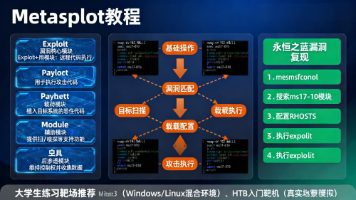[特殊字符] LeetCode 70: Climbing Stairs
LeetCode 70: Climbing Stairs Problem: Calculate distinct ways to climb n steps (1 or 2 steps at a time). Key Approaches: 1️⃣ Dynamic Programming (O(n) time, O(n)/O(1) space): Use dp[i] = dp[i-1] + dp[
🪜 LeetCode 70: Climbing Stairs
1. 📌 Problem Links
2. 🧠 Solution Overview
This problem requires calculating how many distinct ways you can climb to the top of a staircase with n steps, taking either 1 or 2 steps at a time. Below are the main approaches:
| Method | Key Idea | Time Complexity | Space Complexity |
|---|---|---|---|
| Dynamic Programming | Build solution using previous results | O(n) | O(n) or O(1) |
| Matrix Exponentiation | Mathematical approach using matrix power | O(log n) | O(1) |
| Brute Force Recursion | Basic recursive solution | O(2^n) | O(n) |
3. 🟢 Solution 1: Dynamic Programming
3.1. Algorithm Idea
We use dynamic programming where dp[i] represents the number of ways to reach the i-th step. Since we can only take 1 or 2 steps at a time, the number of ways to reach step i equals the sum of ways to reach step i-1 (then take 1 step) and step i-2 (then take 2 steps). This creates a Fibonacci-like sequence.
3.2. Key Points
- State Definition:
dp[i]= number of ways to reach stepi - State Transition:
dp[i] = dp[i-1] + dp[i-2] - Initialization:
dp[0] = 1(ground level, 1 way to stay)dp[1] = 1(only one way: take 1 step)- Alternatively:
dp[1] = 1,dp[2] = 2
- Processing Order: Fill from bottom up (2 to n)
3.3. Java Implementation
class Solution {
public int climbStairs(int n) {
if (n <= 2) return n;
int[] dp = new int[n + 1];
dp[0] = 1; // Ground level
dp[1] = 1; // First step
for (int i = 2; i <= n; i++) {
dp[i] = dp[i - 1] + dp[i - 2];
}
return dp[n];
}
}
3.4. Complexity Analysis
- Time Complexity: O(n) - Single loop through n steps
- Space Complexity: O(n) - DP array of size n+1
4. 🟡 Solution 2: Space-Optimized DP
4.1. Algorithm Idea
We can optimize space by using only two variables instead of an entire array. Since each step only depends on the previous two steps, we can maintain a rolling window of these two values and update them iteratively.
4.2. Key Points
- Variables: Use
prev1andprev2to track previous two states - State Maintenance:
current = prev1 + prev2- Update
prev2 = prev1,prev1 = current
- Edge Cases: Handle n = 1 and n = 2 separately
4.3. Java Implementation
class Solution {
public int climbStairs(int n) {
if (n <= 2) return n;
int prev1 = 2; // Ways for n=2
int prev2 = 1; // Ways for n=1
for (int i = 3; i <= n; i++) {
int current = prev1 + prev2;
prev2 = prev1;
prev1 = current;
}
return prev1;
}
}
4.3. Java Implementation (Alternative)
class Solution {
public int climbStairs(int n) {
int p = 0, q = 0, r = 1;
for (int i = 1; i <= n; ++i) {
p = q;
q = r;
r = p + q;
}
return r;
}
}
4.4. Complexity Analysis
- Time Complexity: O(n) - Same as standard DP
- Space Complexity: O(1) - Only constant extra space used
5. 🔵 Solution 3: Matrix Exponentiation
5.1. Algorithm Idea
This mathematical approach uses matrix exponentiation to achieve logarithmic time complexity. The recurrence relation can be represented as matrix multiplication, and we can use exponentiation by squaring to compute the result efficiently.
5.2. Key Points
- Matrix Form: Represent as
[F(n), F(n-1)] = [F(n-1), F(n-2)] * M - Transformation Matrix:
M = [[1, 1], [1, 0]] - Exponentiation: Compute
M^nusing binary exponentiation in O(log n) time
5.3. Java Implementation
class Solution {
public int climbStairs(int n) {
if (n <= 2) return n;
int[][] base = {{1, 1}, {1, 0}};
int[][] result = matrixPower(base, n);
return result[0][0];
}
private int[][] matrixPower(int[][] matrix, int power) {
int[][] result = {{1, 0}, {0, 1}}; // Identity matrix
while (power > 0) {
if ((power & 1) == 1) {
result = multiplyMatrices(result, matrix);
}
matrix = multiplyMatrices(matrix, matrix);
power >>= 1;
}
return result;
}
private int[][] multiplyMatrices(int[][] a, int[][] b) {
int[][] result = new int[2][2];
result[0][0] = a[0][0] * b[0][0] + a[0][1] * b[1][0];
result[0][1] = a[0][0] * b[0][1] + a[0][1] * b[1][1];
result[1][0] = a[1][0] * b[0][0] + a[1][1] * b[1][0];
result[1][1] = a[1][0] * b[0][1] + a[1][1] * b[1][1];
return result;
}
}
5.4. Complexity Analysis
- Time Complexity: O(log n) - Due to exponentiation by squaring
- Space Complexity: O(1) - Constant space for matrices
6. 📊 Solution Comparison
| Solution | Time | Space | Pros | Cons |
|---|---|---|---|---|
| Standard DP | O(n) | O(n) | Intuitive, easy to understand | Higher memory usage |
| Optimized DP | O(n) | O(1) | Best for interviews, balanced | Still linear time |
| Matrix Exponentiation | O(log n) | O(1) | Optimal time complexity | Complex implementation |
7. 💡 Summary
For the Climbing Stairs problem:
- Standard DP is most intuitive and recommended for understanding the core concept
- Space-optimized DP offers the best practical solution for interviews and general use
- Matrix Exponentiation provides theoretical optimal time but is overkill for most scenarios
The key insight is recognizing this as a Fibonacci sequence problem where each step builds upon previous solutions.
The journey of a thousand steps begins with a single step, and each subsequent step is built upon the wisdom of the ones before - much like dynamic programming teaches us about solving complex problems through simpler subproblems.
更多推荐
 已为社区贡献4条内容
已为社区贡献4条内容









所有评论(0)